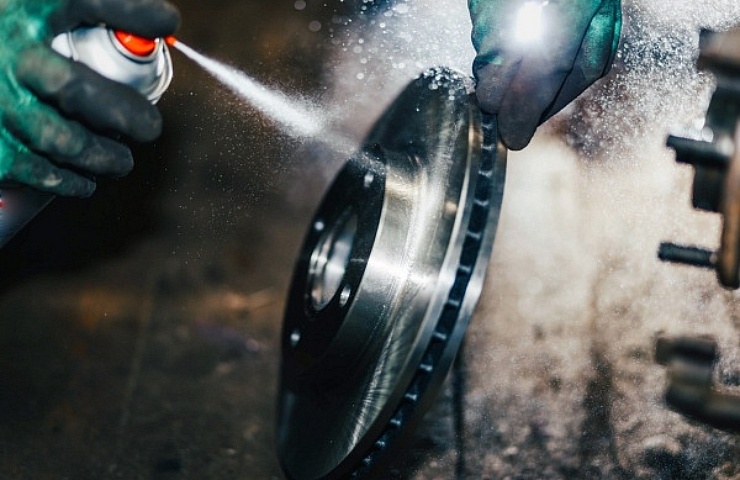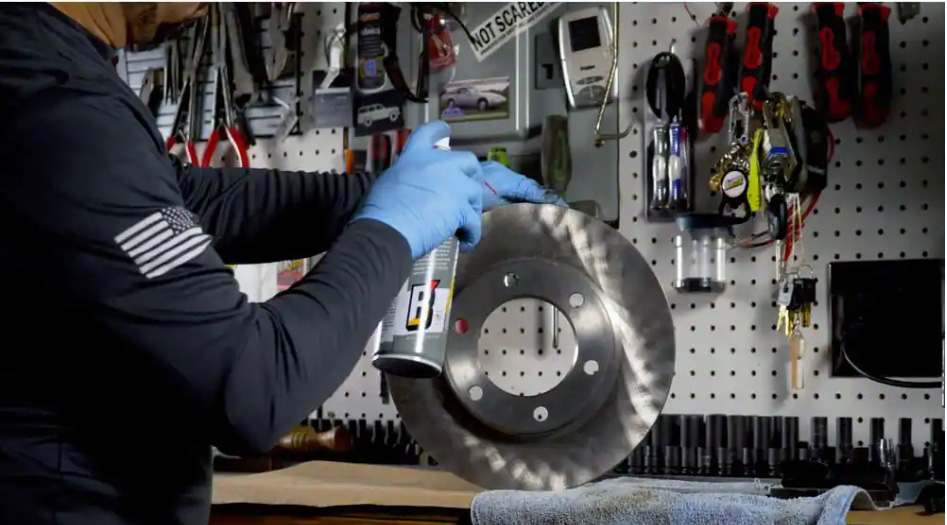Carburetors and brake cleaners use very different chemicals. Carburetor cleaner could damage your brakes by leaving an oily substance behind. That residue could cause them to grab—not a pleasant thing.
These are not benign substances and should be used carefully and disposed of responsibly.
When Should You Use Brake Cleaner?
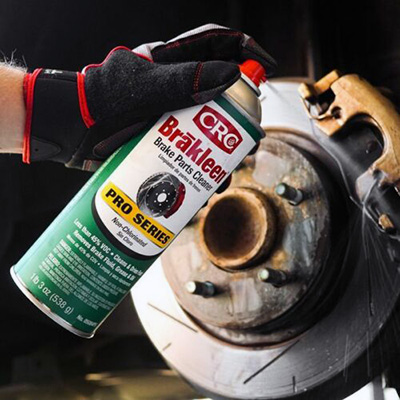
You don’t need to clean the brakes with brake cleaner often. Aerosol brake cleaners are primarily used to remove oils and dust when changing brake components. If you find brake dust on your wheels, you can use a specialized wheel cleaner to clean them.
- To clean the brakes, first jack up the car, supporting it with the emergency brake and wheel chocks.
- With the first wheel still on the ground, loosen the lug nuts, then raise the vehicle until the tire can spin freely.
- Remove the tire, but be careful to store those lug nuts where you can find them later.
Aerosol-type brake cleaners come with a plastic extender tube that fits into the nozzle on the cap. That helps you get close.
- Spray the brakes thoroughly, including the discs (or drums), pads, and calipers.
- After thoroughly dousing the entire brake system, let the fluid soak in, then remove the excess with a cloth.
- The wheel can go back on, and you can move to the next one.
Environmental Concerns About Brake Cleaners

Some types are flammable. Never pour them out in your backyard, sewers, storm drains, or the kitchen sink after use. The good news is that brake cleaner evaporates quickly, and your local waste collection drives can usually handle leftover brake solvent cans.
Cleaning your brakes has more than an aesthetic benefit. According to a study in Science Daily, dirty brakes emit clouds of tiny metal particles that can damage respiratory health. The clouds contain copper, iron, and manganese and interact with acidic, sulfate-rich particles in the air to produce a dangerous aerosol.
If you have older brake cleaners in your garage, you should not use them because of their negative environmental impact. The active ingredients in modern cleaners are organochlorides, such as tetrachloroethylene and dichloromethane.
Three Types of Carburetor Cleaners
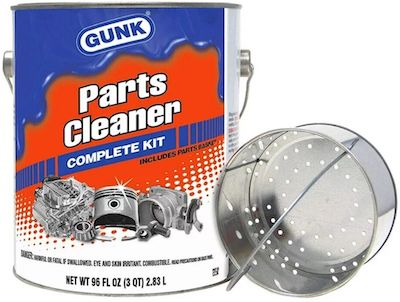
Carburetor cleaner comes in several forms:
- In-tank cleaners (basically fuel additives) from companies like Gunk
- Spray cans that will help linkages work as intended
- Dunk tanks that your carburetor components can soak in
If you’re going with a dunk tank, first remove your carburetor from the vehicle. Don’t do this if you might get in over your mechanical head. The dunk chemicals come in both chlorinated and non-chlorinated forms. While the chlorinated versions work best for really dirty carburetors, they’re also more environmentally challenging—and banned in California.
Because carburetor cleaner is destructive to rubber components, it’s necessary to disassemble the carburetor before dunking fully. Again, don’t do this if you think you can’t get the carburetor together again. Save all parts and photo-document the process if possible. When the parts are thoroughly clean, reassemble the carburetor.
The in-tank cleaners are especially helpful in removing gum, resin, paraffin, varnish, and debris that accumulates inside the carburetor.
Shop now for engine cleanersCarburetor Cleaner Sprays
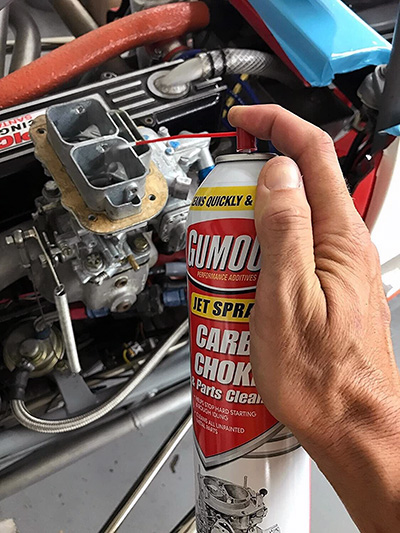
- With the vehicle’s ignition turned off, remove the air cleaner and use the plastic tube extender to spray the cleaner into the heat riser, choke, EGR valve, and throttle linkage.
- Use a soft toothbrush (never a wire brush) to help the spray do its work.
- Then, spray inside the carburetor while the car is running at a fast idle. It’s not necessary to remove the carburetor to clean it, but depending on its location, it might help.
Remember that you’re not likely to need carburetor cleaner unless you own a car built in the mid-1970s or earlier. Fuel injection started to replace carburetion as early as the mid-1950s but didn’t become nearly universal until much later.
The active ingredients in carburetor cleaners include carbon dioxide (CO2), ethyl benzene, toluene, methanol, and acetone. Use with care.

